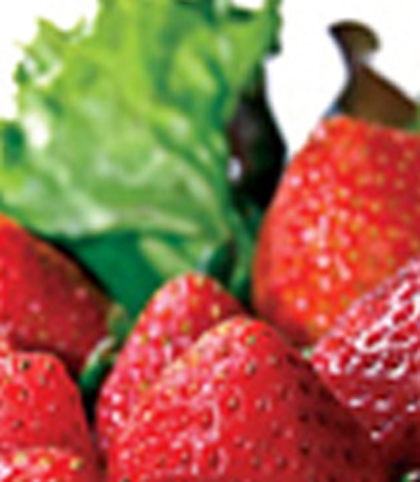Earlier, generations of Nepali children missed nibbling onto juicy strawberries while growing up. Strawberries, at the time were limited to either imprints in their text books or a favorite flavor in candies, ice creams and other confectioneries. Considering that strawberry farming started in Nepal, 20 years back, the lack of proper farming and technology, however, led to it being not very popular for mass production then.
 Later, an agriculture farm established by Jaiti Nepal, a Japanese INGO, 25 km to the north of Kathmandu, in Kakani, started research by cultivating two different varieties of strawberry. The success of the ‘Nyoho’ strawberries (a Japanese variety) are now evident in the local fruit markets around Kathmandu. Owing to its sweetness and high yield it has become a popular cash crop among the locals in Kakani. Currently more than 700 households are involved in commercial farming, each producing approximately 1000 kgs of strawberries per season.
Later, an agriculture farm established by Jaiti Nepal, a Japanese INGO, 25 km to the north of Kathmandu, in Kakani, started research by cultivating two different varieties of strawberry. The success of the ‘Nyoho’ strawberries (a Japanese variety) are now evident in the local fruit markets around Kathmandu. Owing to its sweetness and high yield it has become a popular cash crop among the locals in Kakani. Currently more than 700 households are involved in commercial farming, each producing approximately 1000 kgs of strawberries per season.
Come November, vendors with baskets of ripe strawberries line up the streets of New Road (in Kathmandu). A packet of strawberry during its peak season may cost anywhere from Rs. 15 to Rs. 20, and this trend usually lasts until February. In Kakani, the preparation of strawberry cultivation begins around June. And after months of tending to runners from the mother plant, the actual plantation is carried out during September and the produce is ready by November.
“Research on strawberry farming was extended up to places like Dakshinkali (to the south of Kathmandu) and also Pokhara,” says Bhim Bahadur Shrestha, Manager, Strawberry House, Kathmandu. “However only Kakani boasts of a success story.” The variety of strawberries cultivated in Nepal require an altitude of 1500 - 2500m with a temperature range of 4 - 25 degree Celsius and 3000 - 4000 ml of rainfall, making Kakani the ideal location. Following Jaiti Nepal’s research and training to the local farmers (initially 200 – 250 farmers were trained), Kakani boasts of the largest strawberry farms in Nepal.
Located in Maharajgung, Kathmandu, Strawberrry House is Jaiti Nepal’s sister organization that looks after the farm in Kakani. Strawberry House, now with an extended restaurant, not only markets the best strawberry varieties but also manufactures related products such as strawberry jam and juice. “We used to provide training to the local farmers, however, it was terminated after Jaiti Nepal’s strawberry project ended,” adds Shrestha. “The trainings were simple and usually lasted for a day, and was easily understood by the locals too.”
Strawberry House was established by Shrestha’s brother Man Bahadur Shrestha under the supervision of Jaiti Nepal. And he has been running the place for nearly five years now on behalf of his brother. Most popular for their home delivery services, it also sells the best graded strawberries in the local market. “We grade the strawberries according to its size and we examine all the fruits before taking them to the market,” says Shrestha. “Our specialty includes delivering the best strawberries, packed into boxes, which makes for excellent munchies and gifts.”
For more information,
contact: Strawberry House, Tel: 4412507/ 9841745601











